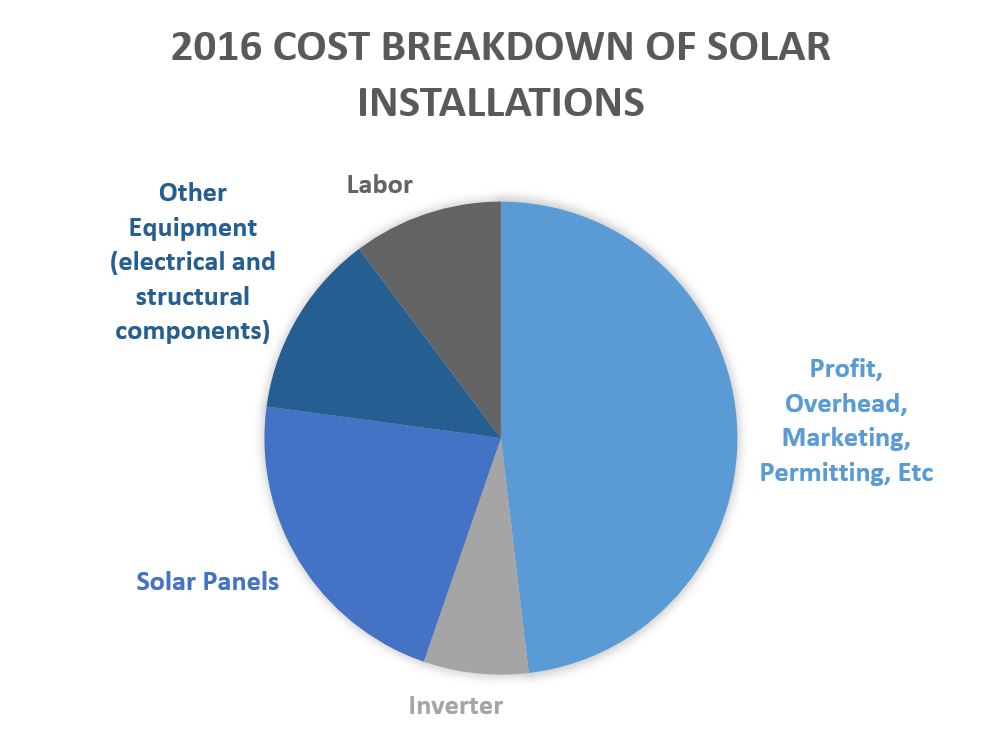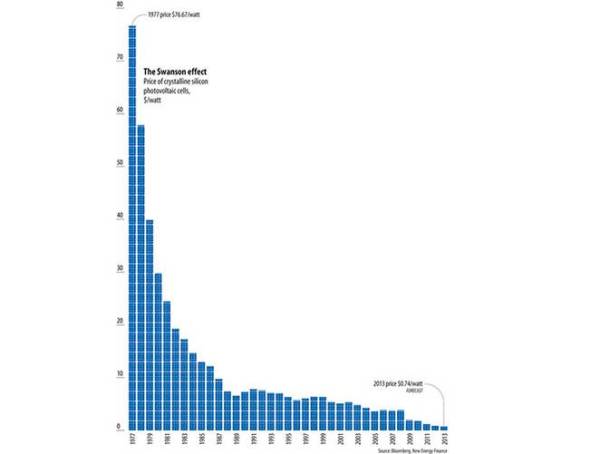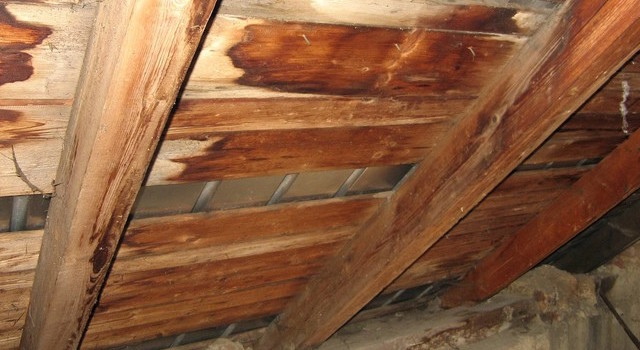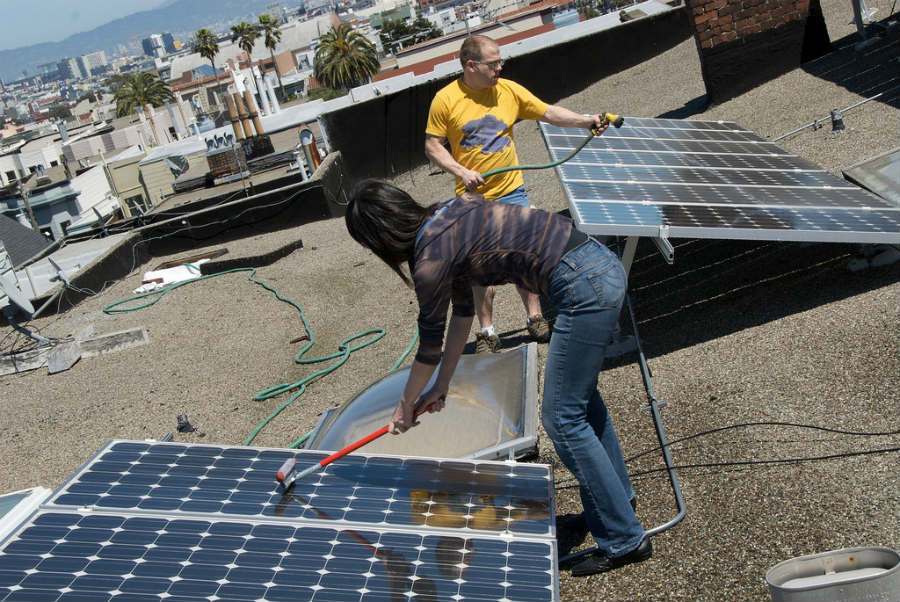Cost of Solar Panels Over Time
The cost of solar has never been lower than it is right now.
#1 Total installation cost
Installing solar currently costs around $3 to $4 per watt before incentives. That before incentives bit is important, as all the federal and state tax credits and rebates that are available can significantly drop your total cost to go solar.
Don’t believe us? Check out the table below, where we’ve estimated the installation costs –both before and after applying incentives – in 10 solar-friendly states.
Total installation cost for a 5kW installation:
| State/City | Average Cost per Watt | Cost Before Incentives | Cost After Incentives | Total Discount After Incentives (% off) |
| Arizona | $3.86 | $19,283 | $13,498 | 30% |
| Austin, Texas | $3.64 | $18,200 | $9,240 | 49% |
| Florida | $3.32 | $16,600 | $11,620 | 30% |
| North Carolina | $3.71 | $18,550 | $12,985 | 30% |
| South Carolina | $3.50 | $17,516 | $8,761 | 50% |
| Los Angeles, California | $3.61 | $18,033 | $11,123 | 38% |
| Oregon | $3.67 | $18,350 | $7,031 | 62% |
| Minnesota | $3.53 | $17,650 | $12,355 | 30% |
| New York | $3.38 | $16,900 | $6,872 | 59% |
| Utah | $3.53 | $17,650 | $12,355 | 30% |
As you can see, costs hover around $3.50 per watt, totaling $17,000 to $19,000 for an average-sized 5kW installation. After taking into account all the available incentives, that price drops to between $7,000 to $13,500 – a decrease of 30% to 60%!
Pretty amazing, right? Want to know who offers these huge incentives? Read the next section to find out!
Incentives
Financial incentives drop the cost of solar dramatically and many organizations offer them.
To begin with, the federal government offers a 30% ITC (Investment Tax Credit). This tax credit – not a deduction – is equal to a dollar-for-dollar discount on your total installation. Check the chart above and you’ll see that in Minnesota, Utah, and Florida, this is the only statewide incentive available for going solar.
In other states like Oregon, New York, and South Carolina, the state government also offers incentives and rebates. These are often tax credits similar to the federal tax credit but can include rebates, property tax exemptions, and sales tax exemptions as well. Municipal governments and local utilities can also offer rebates, performance incentives, and net metering to further lower your total investment going solar (these rebates aren’t accounted for in the above table).
Your best source for information on rebates and incentives is your solar installer, as they’ll know exactly how to maximize your incentives. You can also check out the DSIRE (Database of State Incentives for Renewables and Efficiency) to find incentives that are available in your state – though be warned that it can make for some dry reading.
Installation cost breakdown
Right about now, you might be wondering what goes into those installation costs. Where’s that $12,000 going?
Well, the National Renewable Energy Lab studied this very thing in 2016 and found that ‘soft costs’ (profit, overhead, marketing, permitting, taxes, etc) account for almost 50% of the total installation cost, with equipment making up just 40% and labor the last 10%.
While the report found the average cost to install solar in the US to be around $2.93 per watt – on the lower side of the cost estimates above – the percentage breakdown should remain relatively constant among bigger installers (smaller local installers might have lower soft costs or higher equipment costs).
Take a look at the chart below to see exactly how these costs break down (based on information from page 16 of the NREL report above):

Data from NREL, chart from Understand Solar
According to the report, the price of one solar panel today is about $0.64 per watt. With residential solar panels today averaging around 265 watts, this means a single solar panel costs about $170 and the 19 solar panels needed for an average-sized 5kW installation costing about $3,230.
#2 Cost of solar dropping constantly
Compared to 40 years ago – or even just 4 years ago – the price of solar has plummeted, mostly due to falling panel prices.
Onsite installation cost dropping annually
As mentioned, the NREL report found that installing solar in 2016 cost $2.93 per watt. Can you guess how much solar cost in 2009, just 7 years before? $7.06 per watt (p.5 of the summary)! In those few short years, the price to install solar dropped 60%! Researchers from NREL found that, from 1998 to 2013, the cost to install residential solar declined 6% to 7% per year, jumping to 12% from 2012–2013.
If you really want to be impressed, take a look below at how far the cost of solar panels themselves has dropped!
Despite this price drop, there is still a lot of uncertainty surrounding how low those solar system prices will keep dropping over the next five to 10 years. Many of the tax credits and other incentives that jumpstarted the industry are set to expire in the next couple of years (including the 30% federal tax credit, which was already extended once), which leaves solar companies and investors asking whether or not the greatly reduced price will still draw new consumers.
Solar panel cost decreasing
In the last 40 years, the cost of solar panels has dropped almost unbelievably. This graph from Bloomberg (BNEF) shows the stark difference in pricing between 1977 and today:

In 1977, solar panels cost $77 per watt, making our $0.64 per watt today seem dirt cheap! In just 40 years, the price of solar panels has dropped by 99.2%!
While the panels make up just a fraction of the total installation cost, their amazing cost decrease is what spurred on the solar explosion.
#3 Scenarios that can increase total solar cost
While an average installation costs around $7k to $13k after incentives, there are a few scenarios and options that can add to that expense.
Every building is different and there can be incidental costs. In the sections that follow, we will talk about what you need to look into before installing a solar system and what it might cost. We will also discuss some of the ways that you can reduce the potential cost, to help you make an informed decision.
Premium Solar Products
Going for high efficiency solar panels or newer Tesla products can add costs above and beyond what we’ve listed here. We’ve written extensively about these in other posts:
Financing
Financing your solar installation through a loan or lease adds cost. While you don’t have to shell out the thousands of dollars to purchase the installation outright, the return on your investment also won’t be as high.
For example, installing solar panels in Central Florida can save you $17,844 over 25 years if you purchase the installation outright. However, if you take out a 15-year loan with 5% interest, your savings drop to $10,815 (since you’re adding about $7,000 to your total investment through interest). It’s certainly still worthwhile – $10k is still $10k – but it’s not as much as you could save.
If you go with a loan, then you own the equipment and you have all the rights to it. You also benefit directly from any incentives you’re eligible for. If you lease the equipment, on the other hand, you do not own it. You don’t get to benefit from tax incentives and you cannot sell the system along with your home if you move. If you sell your home and the buyer does not want to take on the lease, then you will have no choice but to cancel the deal or buy the installation from your solar company (at fair market value).
Both leases and loans still allow you to save, but you need to choose your agreement carefully as interest, the length of lease or loan, and any additional fees all affect your savings.
Reroofing![old-wooden-roof-small]()
While a reroof isn’t really part of a solar installation, if your roof shingles or tiles aren’t in good shape and you think you’re due for a replacement in 5-15 years, it’s definitely in your benefit to do so before you have solar installed. The cost to remove your entire solar installation and re-install it on your new shingles is typically in the thousands of dollars and you should try to avoid that additional expense if at all possible.
Thankfully, most solar installers will check your roof and joists (in your attic) thoroughly for any damage or heavy wear and discuss all issues and solutions before starting the solar installation.
If there is a problem, sometimes you can get away with only replacing a small section of your shingles, while other times a complete reroof makes more sense. Your out-of-pocket costs will depend on how much needs to be done as well as the materials you choose.
Your cost for a new roof will depend on the square footage that needs to be covered. Homewyse estimates that for an asphalt shingle roof, you should expect to pay around $3 to $4 per square foot. So, if you need a 200 square foot expanse of roofing replaced with shingles, then you can expect to pay between $600 and $800. Installing new shingles on your 1,200 square foot home would cost between $3,200 and $4,000.
Obviously, this price goes up if you go with more expensive materials. Asphalt or composition shingles are the cheapest, with tile and metal costing significantly more.
How much you choose to invest in your new roof may also depend on how long you plan to be in the home. Asphalt shingles will usually last at least 20 years. Metal and slate are good for 50 or more, so when considering your roof as part of your solar panel cost, keep this in mind.
If you find out you need to install new roof shingles before going solar, it’s something you would’ve had to do anyway at some point in the future, so you might as well do it now and get that solar installation pumping out electricity as soon as possible!
Ground-mounted installations![are-solar-power-worth-it]()
The vast majority of homeowners install their solar panels on their roof. It’s out of the way and easy to install.
You can also mount your solar panels on the ground. If there are a lot of obstacles on your roof (chimneys, antennae, vents, and so on) or heavy shading then rooftop installation could be problematic. Maybe you’ve already installed solar on your roof and what to expand your energy production, but don’t have enough space. In these situations, a ground-mounted system might be your only recourse.
Ground-mounted systems are more expensive, but if you don’t have roof space they are certainly an option.
If you’ve got the space up on your house, you’ll have an easier installation and spend less money by just installing a roof-mounted system. But if that’s not an option, after doing your homework and estimating the return on your investment, ground-mounted systems are a great alternative if you don’t mind shelling out some extra cash.
Battery backup![cost-of-solar-storage]()
Battery back-up is becoming increasingly popular for solar installations, as battery costs continue to fall and utility prices continue to increase.
Obviously, batteries add cost to your solar installation – a big cost. The Tesla Powerwall, which both SolarCity and Sunrun currently offer as battery back-up for their solar installations in Hawaii and California, costs $5,500. The Powerwall can save 14kWh of electricity for later use, about enough electricity for one day for most households.
Battery back-up makes sense where utility rates are very high and the additional cost of purchasing and installing batteries is still cheaper than buying electricity from the utility (again, think Hawaii and California).
If you live in an area with very bad weather and an aging utility infrastructure (old poles, lines, etc) that frequently goes down, you might be interested in battery back-up no matter what the cost, especially if you’ve got sensitive machines that need constant power (like certain medical devices).
Boiling all this down to a sentence: You’d certainly enjoy some serious perks from battery back-up, but you might not be able to recoup your investment if you live outside certain areas.
As research continues into energy storage, the solar system cost including storage will likely also become considerably lower.
Maintenance costs![cost-of-cleaning-solar-panels]()
Maintaining the installation is a cost many people forget about, but it’s just as important as that upfront installation cost. If something breaks 10 years down the line, you’ll have to take care of it right away to get the installation pumping out electricity again.
Your solar panels and inverter – the two biggest equipment expenses for your installation – typically have long-term warranties. Solar panel manufacturers provide 12 to 15-year equipment warranties and 20 or 25-year production warranties (basically ensuring that each year the solar panel will produce a high amount of electricity). Inverter manufacturers typically provide shorter warranties, about 10 years, for their products.
Some people also like to clean their solar panels to make sure they are pumping out as much electricity as possible, but unless you live in a very dusty state with little rainfall, there’s really no need to clean your solar panels. The glass coating is very slippery and ‘self-cleans’ the panels when it rains.
If you’ve gone a few months without rain and you’re starting to notice that they’re pretty dirty, grab a hose and just spray them down. Don’t pay a company to come clean them for you, as the additional electricity your newly clean panels will produce won’t cover the investment of the actual cleaning service.
#4 Tips to ensure a great deal
Even with all the great incentives available, installing solar still costs a pretty penny. Here are a few tips to make sure you get the best deal around.
Install energy efficiency measures![]()
Installing energy efficiency measures is the easiest way to save money on your utility bills and it’s even cheaper than installing solar! It’s certainly not as fun or cool as solar panels on your roof, but consider beefing up your insulation, weatherstripping around doors and windows, installing a few energy efficient appliances, and replacing all your old incandescent light bulbs with LEDs.
Don’t know where to start? Many utilities will give you rebates for performing an energy audit, where a technician walks through your house and tests your doors, windows, and appliances to see how they affect your energy use. They’ll then provide you an itemized list of recommendations to cut your energy use.
All this is such an easy way to drop your energy needs, consider it a prerequisite to installing solar. And once you’ve dropped your energy use as low as possible, you can install a smaller solar installation, allowing you to spend even less money!
Shop around
Just like any home improvement project, talk to a few different installers to see what equipment they offer and their costs.
Be sure to ring up different installers – not just the big boys like SolarCity, Sunrun, and Vivint. National installers can buy in bulk and streamline their processes, leading to low prices, but local installers know the area and often provides better customer service and faster turnaround times.
In addition, local installers can have lower overhead costs than national installers, so if you’re paying in cash or loan and don’t need the special financing national installers can offer (leases and PPAs), local companies can even provide lower prices!
Read everything carefully
Solar is all about the future. You invest now and over the next 25 years make your money back and save some serious cash. With this in mind, reading and understanding all the financial estimates is a worthwhile, nay mandatory, endeavor.
Be sure to know how much electricity your installation will produce. Know how to estimate your total financial savings. Read through all the contract details. How about warranties?
With solar, ensuring you get a great deal is all about knowledge. Know what you’re getting into before signing that paper!
#5 Bottom line on solar panel costs
So, how much are solar panels? Not that much, in and of themselves. The cost you incur in going solar will have far more to do with the type of additional equipment you choose. And when you sell your home, the type of payment agreement you have chosen could affect the price you get and the benefits you reap from installing solar panel technology.
If you are willing to make the initial investment, you could save a great deal of money over the long term, reduce your carbon footprint, and have a more desirable home should you choose to sell.
How much did your installation cost? Have any other tips to ensure a great deal? Let us know in the comments!
Source: Understand Solar





